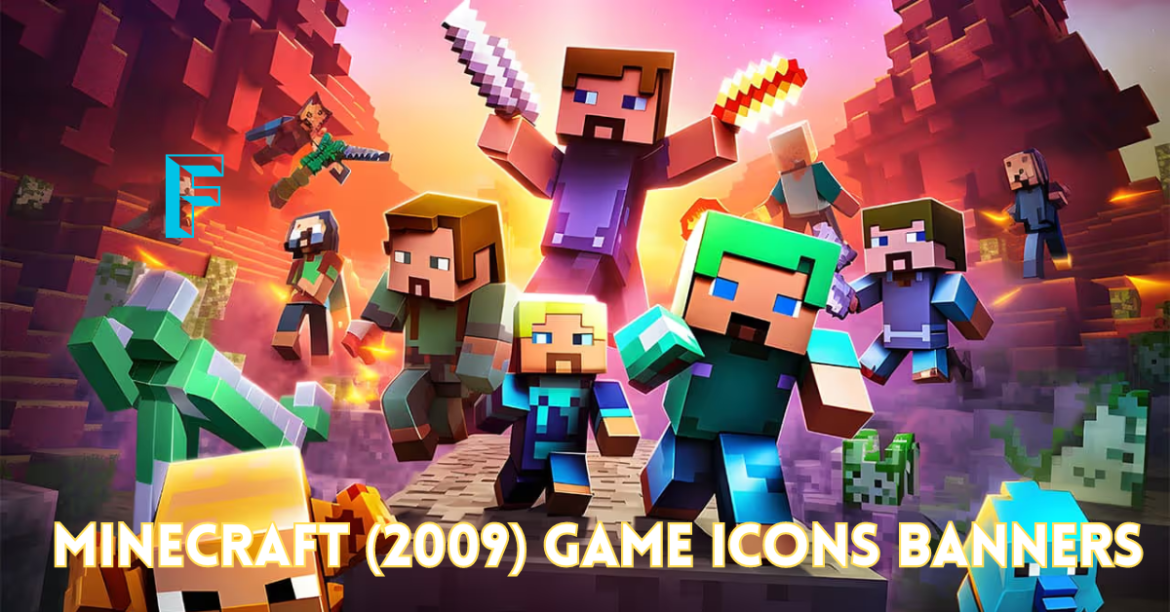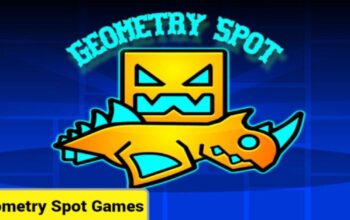
Minecraft, the beloved sandbox game launched in 2009 by Markus Persson (also known as Notch), has left a lasting impact on the gaming world. Beyond its unique gameplay, one of the elements that added to its iconic status is its visual identity. From game icons to banners, Minecraft has developed a distinct aesthetic that has evolved over the years, maintaining its charm while adapting to new trends and updates.
The Origins of Minecraft’s Iconography
In 2009, Minecraft (2009) game icons banners was still in its early stages of development, but its visual style was already making waves. The pixelated aesthetic, inspired by retro games, was not just a choice of style but a technical necessity at the time. The game’s low-resolution graphics allowed it to run on various systems, which became one of its core strengths. Minecraft’s first game icon represented this simplicity—blocks of dirt and grass, symbolizing the game’s core mechanics of mining and building.
The early Minecraft (2009) game icons banners were often minimalistic, capturing the essence of Minecraft in a simple yet effective way. These icons, including the game’s launcher icon, became instantly recognizable symbols for players around the world. The dirt block icon was a visual metaphor for Minecraft’s foundational gameplay—digging, exploring, and constructing in a boundless environment.
The Evolution of Minecraft Icons
As Minecraft (2009) game icons banners grew in popularity, its game icons evolved. The addition of updates, expansions, and new game modes required the icons to adapt. Still, the pixelated look remained at the heart of Minecraft’s branding. New icons featured more variety, including the introduction of icons representing different materials, items, and characters within the game.
Over the years, Minecraft’s icons have become synonymous with creativity and exploration. From the classic “diamond pickaxe” to the “creeper face,” these symbols transcend the game itself, appearing in fan art, merchandise, and community-created mods. Players began to associate specific icons with different game experiences, such as survival mode, creative mode, or adventure mode.
Banners in Minecraft: A Canvas for Creativity
Introduced in the 1.8 update, Minecraft (2009) game icons banners quickly became one of the most exciting additions to Minecraft. Banners allow players to create customizable flags and decorations within the game, using dyes and patterns to design unique creations. Much like game icons, banners became an extension of Minecraft’s creative philosophy, allowing players to express their individuality and style within the virtual world.
Players could create a range of banner designs by layering different patterns and colors, which opened up endless possibilities. Whether used to mark territories, decorate bases, or symbolize team affiliations in multiplayer modes, banners became a way for players to personalize their Minecraft worlds.
In addition to the Minecraft (2009) game icons banners that players could craft, there were official Minecraft banners released for events, promotional materials, and even game anniversaries. These banners often featured exclusive designs that celebrated the game’s milestones or collaborations with other brands.
Impact on Gaming and Pop Culture
The visual identity of Minecraft (2009) game icons banners, including its game icons and banners, has left an undeniable mark on gaming culture. The dirt block icon is now one of the most recognizable symbols in gaming history. Similarly, the use of banners in Minecraft has inspired similar customization features in other games, allowing players to represent their personal style.
In the broader context of pop culture, Minecraft (2009) game icons banners pixelated visuals have crossed into the realms of fashion, art, and media. From clothing with Minecraft icons to fan-created banners used in cosplay and conventions, the game’s imagery is everywhere. It’s a testament to the simple yet powerful design choices that have resonated with millions of players worldwide.
Minecraft’s Visual Legacy and Future Possibilities
![]() The continued evolution of Minecraft (2009) game icons banners demonstrates how essential visual elements are to the game’s lasting appeal. These images not only evoke nostalgia among long-time players but also provide a sense of unity for the expansive Minecraft community. The simplicity of the icons and the creativity allowed by the banners are symbolic of Minecraft’s core values: imagination, innovation, and accessibility.
The continued evolution of Minecraft (2009) game icons banners demonstrates how essential visual elements are to the game’s lasting appeal. These images not only evoke nostalgia among long-time players but also provide a sense of unity for the expansive Minecraft community. The simplicity of the icons and the creativity allowed by the banners are symbolic of Minecraft’s core values: imagination, innovation, and accessibility.
One of the most exciting aspects of Minecraft (2009) game icons banners visual elements is how they continue to evolve with new updates and expansions. Each time Minecraft introduces new features, the visual identity expands, bringing in fresh icons and new banner possibilities. As the game has grown with the introduction of new materials, mobs, and biomes, so too have the accompanying visuals, keeping Minecraft’s look modern while preserving its core pixelated charm.
Community Contributions to Minecraft Iconography
Perhaps what makes Minecraft (2009) game icons banners truly special is the role that the community plays in shaping its visual identity. The modding community, in particular, has had a huge impact on expanding the game’s visual language. Players have created their custom icons and banners, allowing for even greater creative freedom. From texture packs that redesign the entire visual experience to mods that introduce entirely new blocks, items, and tools, the possibilities are endless.
These community contributions have helped Minecraft stay relevant for over a decade. Many players download and share custom banners and icons through platforms like Reddit and Minecraft fan forums, making the game’s visual evolution a collaborative effort. It’s common to see custom banners representing everything from real-world countries to fictional fandoms within the game, further proving Minecraft’s influence beyond the digital space.
How Game Icons and Banners Affect Player Experience
Although Minecraft (2009) game icons banners might seem like minor elements in a massive game like Minecraft, they significantly impact the player’s overall experience. Game icons provide visual cues that help players quickly identify items, blocks, and tools in their inventory. This ease of recognition is crucial in a game that thrives on exploration, crafting, and survival. The clear, straightforward design of Minecraft icons ensures that players can navigate the game’s many resources without feeling overwhelmed.
On the other hand, Minecraft (2009) game icons banners offer players a sense of ownership. Whether it’s designing a custom banner for a multiplayer faction or hanging a personalized flag over a castle, banners act as a form of self-expression. In many ways, they make Minecraft feel more like home to players, turning digital spaces into personalized creations. Banners have also been used in competitive multiplayer games to rally teams under a common symbol, turning them into markers of identity and pride within the gaming community.
Looking Forward
With Mojang Studios constantly rolling out new updates, the future of Minecraft (2009) game icons banners visual design holds exciting potential. Introducing new blocks, biomes, and game mechanics will continue to inspire innovative icons, while new customization options may lead to even more intricate banner designs. As Minecraft continues to evolve with new technologies, such as ray tracing and higher-resolution texture packs, the icons and banners could see further enhancements that blend nostalgic charm with cutting-edge visuals.
The ability to create, share, and personalize has always been at the heart of Minecraft (2009) game icons banners are perfect reflections of that philosophy. As the game grows, the community will likely play an even bigger role in designing new icons and crafting more complex banners, ensuring Minecraft’s visual identity remains as dynamic as its gameplay.
Conclusion
Minecraft (2009) game icons banners have played a pivotal role in shaping the game’s iconic status. From the early days of pixelated dirt blocks to today’s expansive library of icons and custom banners, these visuals have become symbols of creativity, community, and the endless possibilities Minecraft offers. Whether through official updates or community-driven designs, Minecraft’s visual elements continue to evolve, ensuring the game stays fresh and exciting while honoring its roots.
As players around the world continue to explore, build, and craft in the vast Minecraft universe, the icons and banners will remain an integral part of the experience, reminding us of the game’s humble beginnings and limitless future.
You May Also Read: Geometry Spot
